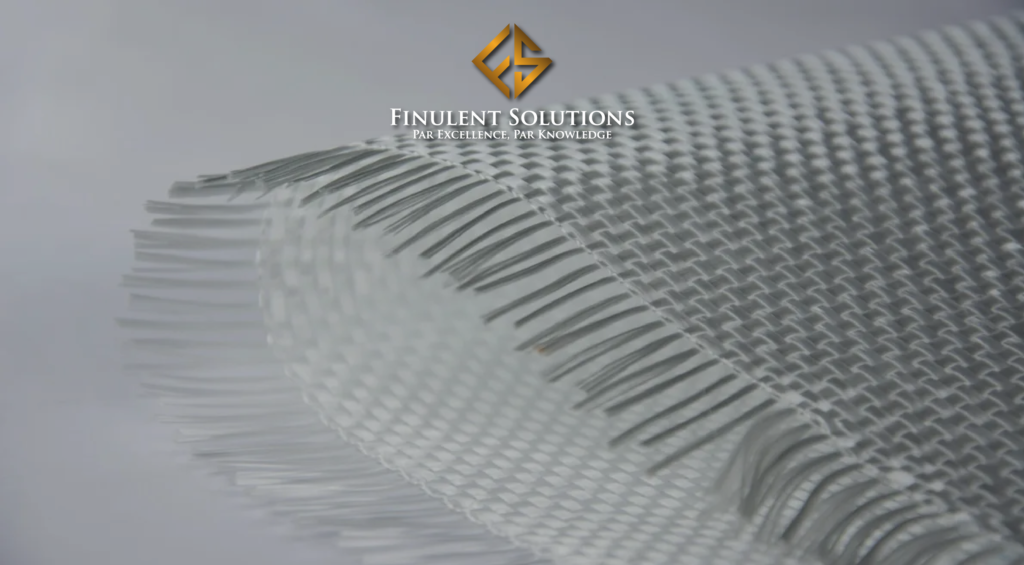Firstly, tapping into the formidable force of the wind has always been a pivotal aspect of renewable energy, with turbine blades standing at the forefront of this endeavor. As we navigate the quest for cleaner and more efficient energy solutions, the field of wind turbine technology is undergoing a transformative evolution. This blog aims to delve into the dynamic landscape of this transformation, shedding light on the groundbreaking innovations that propel wind turbine blades into a new era of efficiency and sustainability.
Join us as we navigate through the intricacies of wind turbine technology, unraveling the mysteries behind the latest advancements that not only enhance energy output but also contribute to a sustainable and eco-conscious future.
Current State of Wind Turbine Blades
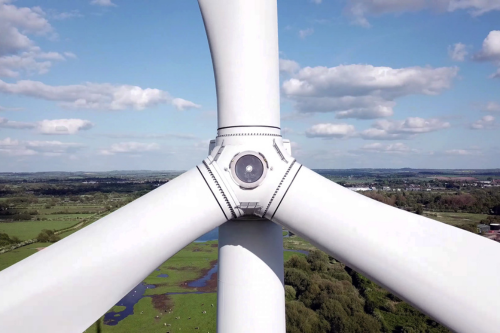
Wind turbine blades are fundamental elements responsible for converting the kinetic energy of the wind into electrical power. Before delving into the intricacies of advanced materials, let’s first explore the current design landscape of these crucial components.
Materials and Construction: Fiberglass and composite materials have long-constructed wind turbine blades. Additionally, these materials offer a harmonious blend of strength, flexibility, and cost-effectiveness. While advanced composites dominate the landscape, certain applications, especially in smaller-scale turbines or experimental designs, continue to explore the use of wood and metal.
Size and Scale: Wind turbine blades have undergone a remarkable transformation in size and scale over the past few decades. In the 1990s, wind turbine blades were around 20 meters in length, they now stretch to over 80 meters, capturing more wind and generating more power.
Smarter Design: Many current blades feature a swept-back design, optimizing their aerodynamic efficiency by reducing drag and improving the extraction of wind energy. Blades are no longer static lumps. Smart aerofoils adapt their shape to wind conditions, such as wings that adjust for turbulence.
Significance of Advancements of Wind Turbine Blades
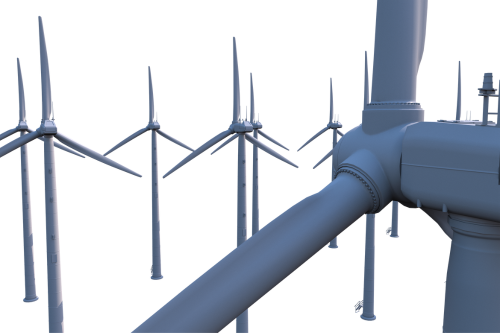
The advancements in wind turbine blades play a crucial role in shaping the landscape of renewable energy. These innovations, featuring larger sizes and improved aerodynamics, increase energy capture. Simultaneously, they improve cost efficiency and enhance technological sophistication with advanced materials. Modern blades are engineered to optimize performance across varied wind conditions, ensuring stability and reliability in energy production.
Beyond efficiency gains, the advancements also prioritize environmental sustainability, with a focus on recyclable materials and eco-friendly manufacturing practices. This technological progress propels the global shift to cleaner energy sources, driving job creation, economic growth, and a more resilient electrical grid. It establishes wind energy as a pivotal player in the quest for a sustainable future.
Advanced Materials in Wind Turbine Blades
Carbon Fiber
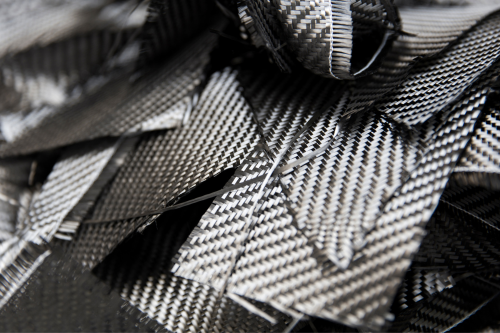
The integration of carbon fiber as an advanced material in wind turbine blades signifies a significant leap in the pursuit of more efficient and sustainable energy solutions. Compared to traditional fiberglass, carbon fiber is up to 75% lighter while boasting 5 times the tensile strength. This means wind turbine blades can be longer and capture more wind energy without adding excessive weight to the turbine. Imagine a blade as long as a football field, yet light enough to be lifted with your pinky finger!
Polymer Innovations
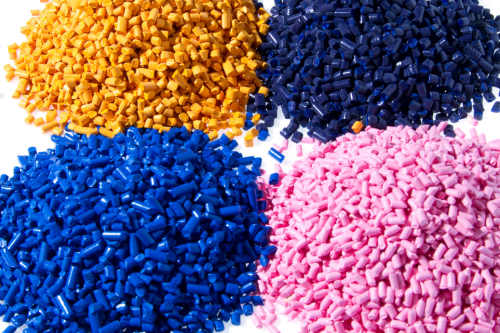
Traditionally, wind turbine blades use polymers, with ongoing research aiming to optimize properties for performance and sustainability. Fiber-reinforced polymers (FRPs), such as epoxy or polyester, reinforced with glass or carbon fibers, not only balance strength, flexibility, and durability but also exhibit enhanced fatigue resistance and tensile strength.
In addition, notable advancements in bio-based composites utilize renewable resources, such as plant-based fibers and bio-resins from sources like soybeans or corn. Researchers explore fibers like flax, hemp, and bamboo to create eco-friendly composites with desirable mechanical properties. Companies, including LM Wind Power, are incorporating flax fibers into blade designs.
Composite Marvels
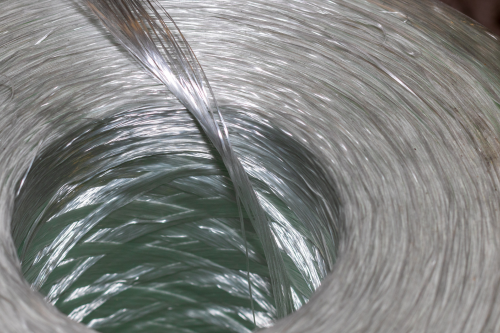
Composites, combining materials like fiberglass, carbon fiber, and polymers, offer a unique synergy of strength, flexibility, and durability. Meticulous engineering creates blades with superior properties, often combining carbon fiber with lightweight polymers for robustness. These marvels in wind turbine blades go beyond traditional construction, pushing design boundaries. The focus is on enhancing structural integrity and optimizing aerodynamics for improved energy capture. The result is blades that withstand dynamic wind forces, maintaining efficiency across varying conditions.
Next-Generation Technologies
Smart Blades
Smart blades are intelligent systems that allow for real-time monitoring and adjustment of the blade’s aerodynamic profile, enabling optimal performance under varying wind conditions.
- Key Features: Smart blades are equipped with sensors that measure factors like wind speed, direction, and turbulence. Based on this data, the control systems can dynamically adjust the pitch and shape of the blades to maximize energy capture. This technology enhances the efficiency and reliability of wind turbines, contributing to increased overall energy output.
- Benefits: The implementation of smart blades helps mitigate the impact of turbulent winds, improves load distribution on the turbine, and reduces stress on the entire system. This results in enhanced energy production, reduced maintenance costs, and prolonged lifespan for the wind turbine.
3D Printing in Blade Manufacturing
3D printing, also known as additive manufacturing, is an innovative technique that involves layer-by-layer deposition of materials, offering unprecedented design flexibility and precision in manufacturing.
- Key Features: 3D printing enables the creation of intricate blade designs that were previously challenging or impossible with traditional manufacturing methods. This technology allows for the optimization of internal structures, reducing weight while maintaining strength. It also facilitates rapid prototyping and customization.
- Benefits: The use of 3D printing in blade manufacturing contributes to cost reduction, increased production efficiency, and improved overall performance. By minimizing material waste and allowing for complex geometries, 3D-printed blades can be tailored to specific wind conditions, maximizing energy capture and turbine efficiency.
Innovative Design Approaches within Wind Turbine Blades
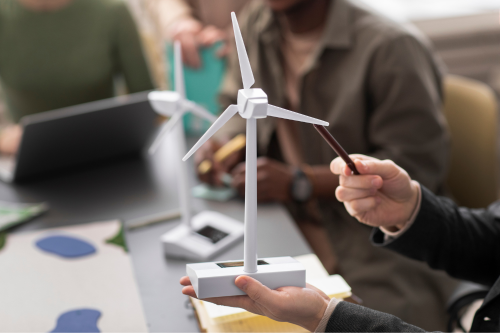
Active flow control
Active Flow Control (AFC) is an advanced technique in wind turbine design that actively manages airflow for enhanced efficiency. By using sensors to detect real-time wind conditions, AFC employs actuators like air jets, plasma actuators, and morphing blades strategically placed on the blade to optimize performance by reducing drag, controlling separation, and adapting to changing wind conditions. This innovative approach ensures maximum energy capture in variable wind environments.
Optimized blade geometry
Optimized blade geometry entails precisely designing wind turbine blades to achieve peak efficiency and performance, often aided by advanced software like Computational Fluid Dynamics (CFD). This involves fine-tuning factors like length, curvature, twist, and profile shape to enhance aerodynamics, minimize drag, and optimize energy capture. Engineers aim for a perfect balance, enabling blades to operate efficiently across various wind speeds and conditions, maximizing the overall effectiveness and output of the wind turbine system.
Leading-Edge Serrations
Leading-edge serrations are small notches intentionally added along the front edge of wind turbine blades. These features disrupt airflow, reducing turbulence and aerodynamic noise. By minimizing drag and delaying flow separation, leading-edge serrations enhance blade efficiency and improve energy capture, particularly in varying wind conditions. This design innovation optimizes overall wind turbine performance.
The Liam – Archimedes Screw Wind Turbine
The Liam F1, also known as the Archimedes Screw Wind Turbine, uses curved blades like an Archimedes screw, capturing wind from all directions. Its unique design makes Liam more versatile and potentially more efficient than traditional wind turbines. The helix, comprised of curved blades, generates rotational motion to produce electricity, reflecting innovative approaches to renewable energy. Liam aims to be eco-friendly, with sustainable materials and a bird-friendly design.
Helical Wind Turbine
The helical wind turbine is a broad term with various designs that utilize helical blades or rotors. Unlike traditional horizontal or vertical-axis wind turbines, the helical design allows the turbine to capture wind from various directions. The helical rotor, typically consisting of curved blades arranged in a spiral pattern, generates rotational motion as wind flows through it, driving the turbine’s generator to produce electricity. This design offers advantages such as improved efficiency, reduced noise, and the ability to harness wind from changing directions.
Future of Wind Turbine Blades
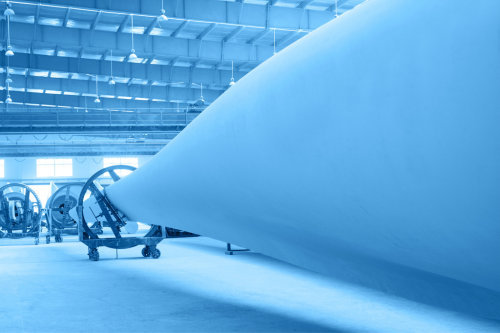
Overall, the future of wind turbine blades is brimming with innovation and exciting possibilities, pushing the boundaries of efficiency, sustainability, and intelligence. Smart technologies, including sensors and control systems, will be integral, enabling blades to adapt dynamically to changing wind conditions for optimal performance. Here are some key trends to watch out for:
- Bigger and Smarter: Blades will keep growing, pushing the 200-meter mark and beyond.
- Smart Materials: Embedded sensors and self-healing polymers will detect and address cracks or fatigue before they become critical issues.
- Active Flow Control: Tiny jets or plasma actuators will manipulate the airflow around the blade, optimizing performance and reducing fatigue.
- Adaptive Design: Morphing blades will change shape on the fly, adjusting to wind conditions for maximum efficiency.
- Recyclable Blades: Research is actively exploring solutions to turn decommissioned blades into new materials, closing the loop.
- Beyond Steel and Fiberglass: While these materials will remain dominant for the near future, new options are emerging, such as carbon nanotubes and graphene.
The future of wind turbine blades is not just about generating more power; it’s about doing so smarter, cleaner, and closer to home. Build your smarter and cleaner home today by getting in touch with us.
Lastly, stay updated about the renewable energy sector in our blogs, industry news, and newsletters!

